During World War II, roughly 280,000 men and women from Louisiana served in the armed forces. There were over 30 military installations in the state, in addition to more than 40 prisoner of war camps. Louisiana industry supplied the Allied war machine with vital materials such as oil, synthetic rubber, and ships of all sizes. Civilians collected scraps, grew Victory gardens, and bought war bonds to build aircraft. Louisianans were all in it together, and this series highlights when the Pelican State went to war.
In August 1944, Higgins Industries, under the direction of Andrew Higgins, was dealt a costly blow when a contract for C-46 cargo planes was canceled. This represented a huge loss for Higgins Industries and the city, as the sprawling Michoud plant in eastern New Orleans had been completed specifically to build these cargo planes. The contract cancellation made headlines across the country and caught the attention of the Tennessee Eastman Corporation, which operated the electromagnetic separation plant “Y-12” at Oak Ridge, Tennessee. The Y-12 plant was responsible for producing uranium to be used in atomic bombs. By the end of August, Higgins Industries had a contract to make carbon components and metal parts for Manhattan Project production work.
This aerial view of the Michoud plant gives a hint to the size of the facility. Originally built for aircraft production, the plant provided about 40 acres of climate-controlled production space. The National WWII Museum, Gift in memory of Marvin J. Perrett, 2018.126.011.
That fall, roughly 2,500 workers were selected from existing lines at Higgins Industries’ various plants to work on a new line. The workers had to swear an oath of secrecy about the work they would be doing. Andrew Higgins’s son Frank was put in charge of the operation at the Michoud plant, with a mandate for absolute secrecy: “Our right hand couldn’t know what the left hand was doing,” according to Higgins. Despite the need for secrecy, few security measures were put into place, not even the addition of armed guards. No other work was guarded that way, so their presence would likely have tipped off workers that their work was more than they had been told.
The “vile, dirty, and dangerous” work, as Andrew Higgins described it in a press conference, was complicated. The pieces were unusual in shape, and workers were making parts with no understanding of their eventual use. It was like making puzzle pieces without seeing the puzzle. Some workers thought they were making radio parts, others secret new cameras, but the scuttlebutt around Michoud was that they were assisting with production of the Norden Bomb sight. None of those suspicions were even close, and no one could have dreamed of what they were working on.
Once the lines were up and running, workers produced carbon parts that met the high standards required and reflected the quality of work performed by the men and women of Higgins Industries. Just after the carbon order was placed with Higgins, another order came in for metal parts. Lines were added and adjusted to meet the shifting needs of the Tennessee Eastman Corporation. As always, the workers adapted, changes were made, and work carried on.
The Carbon Division worked in the back eastern corner of the massive plant. The area was sealed off, not so much for secrecy, as to prevent the carbon dust generated by production from permeating the entire factory. Working on this these lines were mothers, grandmothers, fathers, and veterans. Nearly all of them had family members in uniform. Some drove hundreds of miles each day to take their place on the line. Some came on crutches due to physical disabilities. Ten hours a day, six days a week, they took their places on the line. On the carbon line, workers were mostly shielded by protective clothing, but their hands and faces would be blackened by dust by the time they left the plant.
-

Bertha Sheridan worked on the atomic line despite being partially paralyzed. “Orleanians, from Youths to Grandmothers, Help Build Atom Bombs,” The Times-Picayune New Orleans States, August 12, 1945. Courtesy of Jerry Strahan.
-

Catherine Dolles, with her face and arms covered with dust from the production process, served as the “lead woman in inspection” on a production line at Higgins Industries’ Michoud plant during the final year of World War II. “Orleanians, from Youths to Grandmothers, Help Build Atom Bombs,” The Times-Picayune New Orleans States, August 12, 1945. Courtesy of Jerry Strahan.
The difficult and dirty work continued over the next year, including Christmas Eve, Christmas Day, and New Year’s Day. The demand for parts was continuously increasing. If any of the workers questioned the work, they kept their doubts quiet. In the year of production before an atomic bomb was dropped, there were no reported intelligence leaks at Higgins.
As the workday in New Orleans ended on August 5, 1945, across the world three B-29 bombers made their way to the skies over mainland Japan. There it was the early morning of August 6, and the world was on the brink of a new era. Americans awoke on August 6 to news of the destruction of Hiroshima, Japan by a single bomb that was more destructive than anything seen before. With the release of the first atomic bomb, nicknamed “Little Boy,” and dropped from the B-29 Enola Gay, the world entered the atomic age.
That night Andrew Higgins spoke at a press conference in Chicago. He revealed that the manufacturing process his employees had believed to be routine was in fact work for the Manhattan Project. Although he couldn’t divulge any details about what they had been doing, Higgins was able to make it known that the work at Michoud had helped to build the most powerful weapons in the world. Higgins remarked about the atomic bomb, “The potentialities of it intrigue the mind of man.” He applauded the hard work of the men and women on this most secretive line, calling them “heroes and heroines."
-

Ethel Bright, mother of three sons in the Army Air Forces and grandmother to two, worked on the atomic line at Higgins. “Orleanians, from Youths to Grandmothers, Help Build Atom Bombs,” The Times-Picayune New Orleans States, August 12, 1945. Courtesy of Jerry Strahan.
-

The Enola Gay on Tinian 1945. The National WWII Museum, Gift of David Lawrence, 2012.195.170.
Much of the documentation surrounding the uranium bomb Little Boy was destroyed after the war when it was determined to be less effective than the plutonium bomb dropped on Nagasaki, Japan. There is little documentation available on Higgins’s involvement with the Manhattan Project. What is known has come from documentation from the National Archives, Andrew Jackson Higgins and the Boats that Won World War II by Jerry Strahan, and newspaper articles published in 1945 by The Times-Picayune in New Orleans. After this story was published on the Museum’s website four years ago, I received some insightful information from a family whose father had been part of the Manhattan Project. This shed light on the details of what was being made by Higgins Industries.
The different parts, made either of carbon or stainless steel, were parts for the Alpha and Beta tracks at the Y-12 facility in Oak Ridge. The Alpha and Beta tracks were the large calutrons in which uranium 235 (U235), the isotope used in the Little Boy bomb, was separated from uranium 238. Through an electromagnetic process, U235 could be isolated and captured. Higgins manufactured various parts used in the calutrons, including pieces referred to as “J-slit” and “G-slit.” The J-slits were stainless steel faceplates which functioned as electrodes to control the flow of uranium into a tank in the receivers of the calutrons. The G-slits were sophisticated carbon parts used to accelerate the uranium entering the J-slit as the splitting process began. At the other end of the calutron, inside a receiver pocket, were “foot scrapers.” These were rows of carbon parts set at an angle, which trapped the separated uranium atoms. They gained their nickname due to their resemblance to a shoe scraper.
-

The Alpha II track at the Y-12 facility. Image from Manhattan District History, Manhattan Project, US Army Corps of Engineers, Book V: Electromagnetic Project, Volume 6 – Operation.
-

This display highlights the work by Higgins’ Carbon Division. Secrecy is touted, suggesting this was taken before the true nature of the work became public knowledge in August 1945. The National WWII Museum, 2008.280.014.
Once the uranium was separated and captured in additional carbon pieces, they would be burned, facilitating the recovery of uranium isotopes. The captured U235 was then carried by a single person to New Mexico via train. It is estimated that the dedicated workers of Higgins Industries produced upwards of two million parts for Oak Ridge. When the news of the atomic bomb broke, and Andrew Higgins was able to inform his workers of their contribution, most expressed surprise and gratitude to have been involved in helping to bring an end to the war. They had worked tirelessly, pushing through 10 hour shifts, as many as six days a week, making parts they knew nothing about. The end of the war brought them reason to celebrate, as most had sons, husbands, or daughters in uniform, eager to return home.
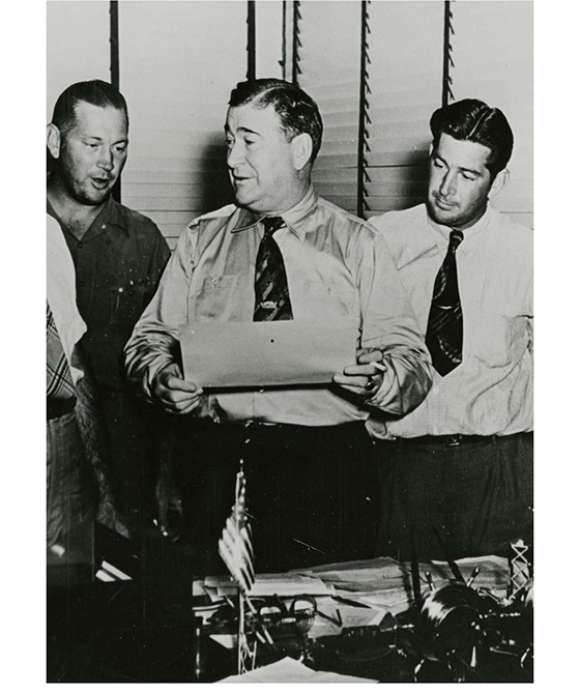
Bayou to Battlefield: Higgins Industries during World War II
This permanent exhibit tells the remarkable story of WWII boatbuilder Andrew Jackson Higgins and his Higgins Industries workforce.
This article is part of an ongoing series commemorating the 75th anniversary of the end of World War II made possible by Bank of America.
Kali Martin
Kali Martin is a former Research Historian of The National WWII Museum's Jenny Craig Institute for the Study of War and Democracy.
Cite this article:
MLA Citation:
APA Citation:
Chicago Style Citation:
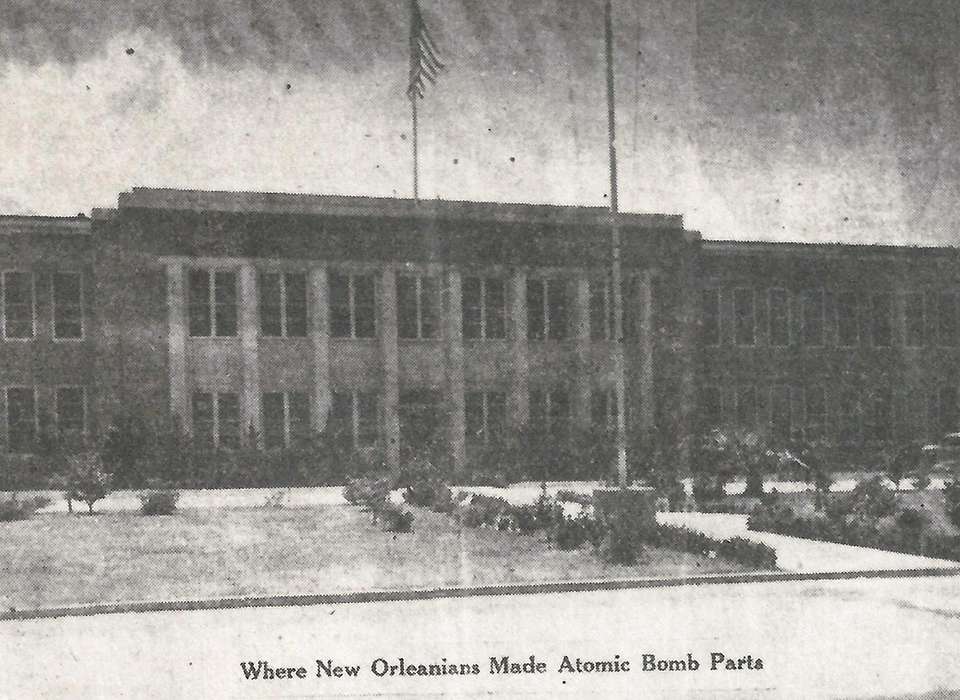
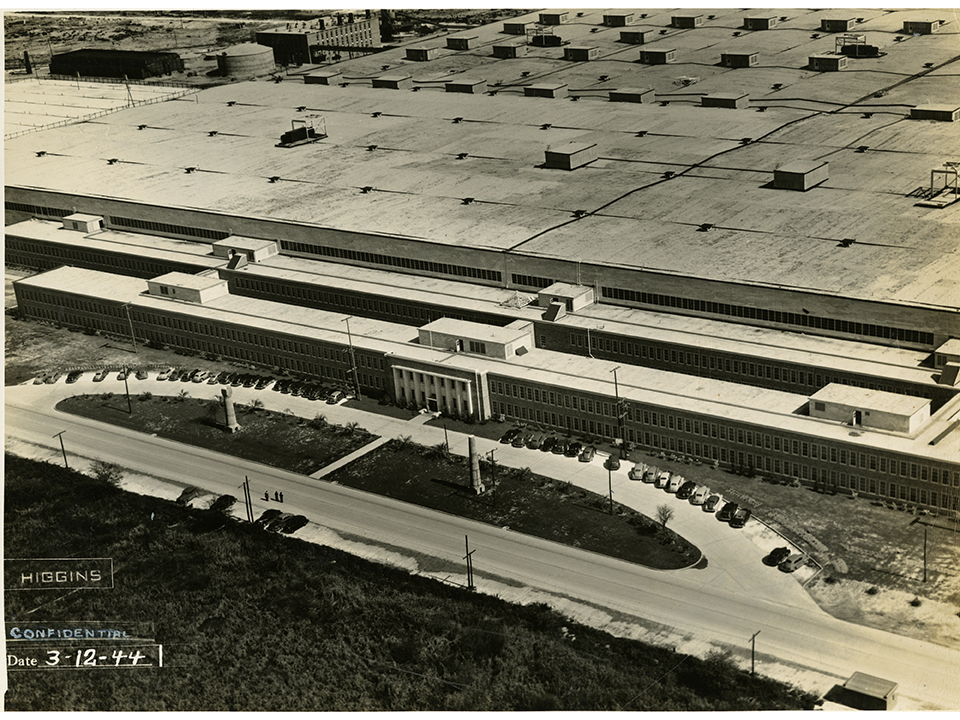
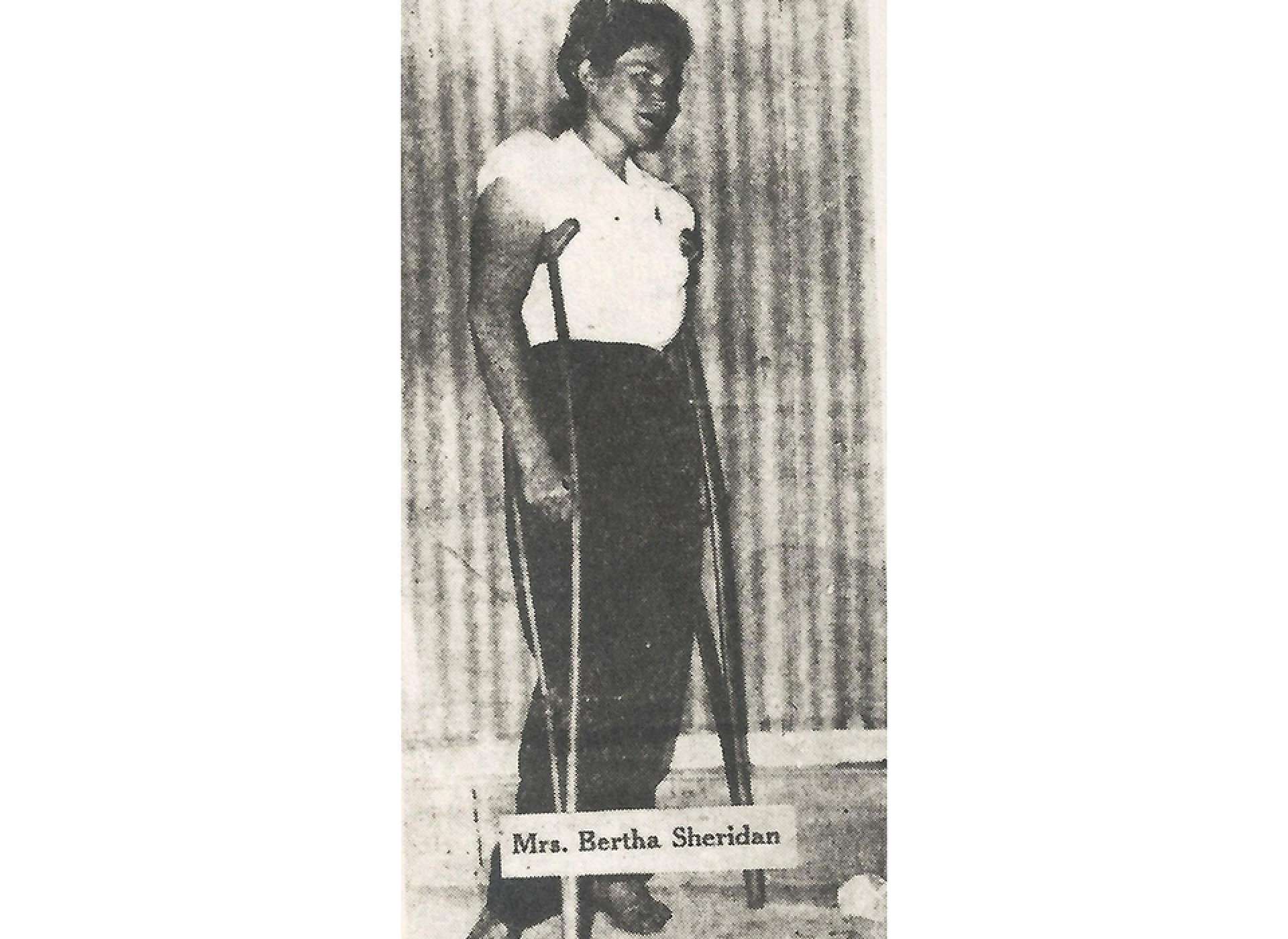
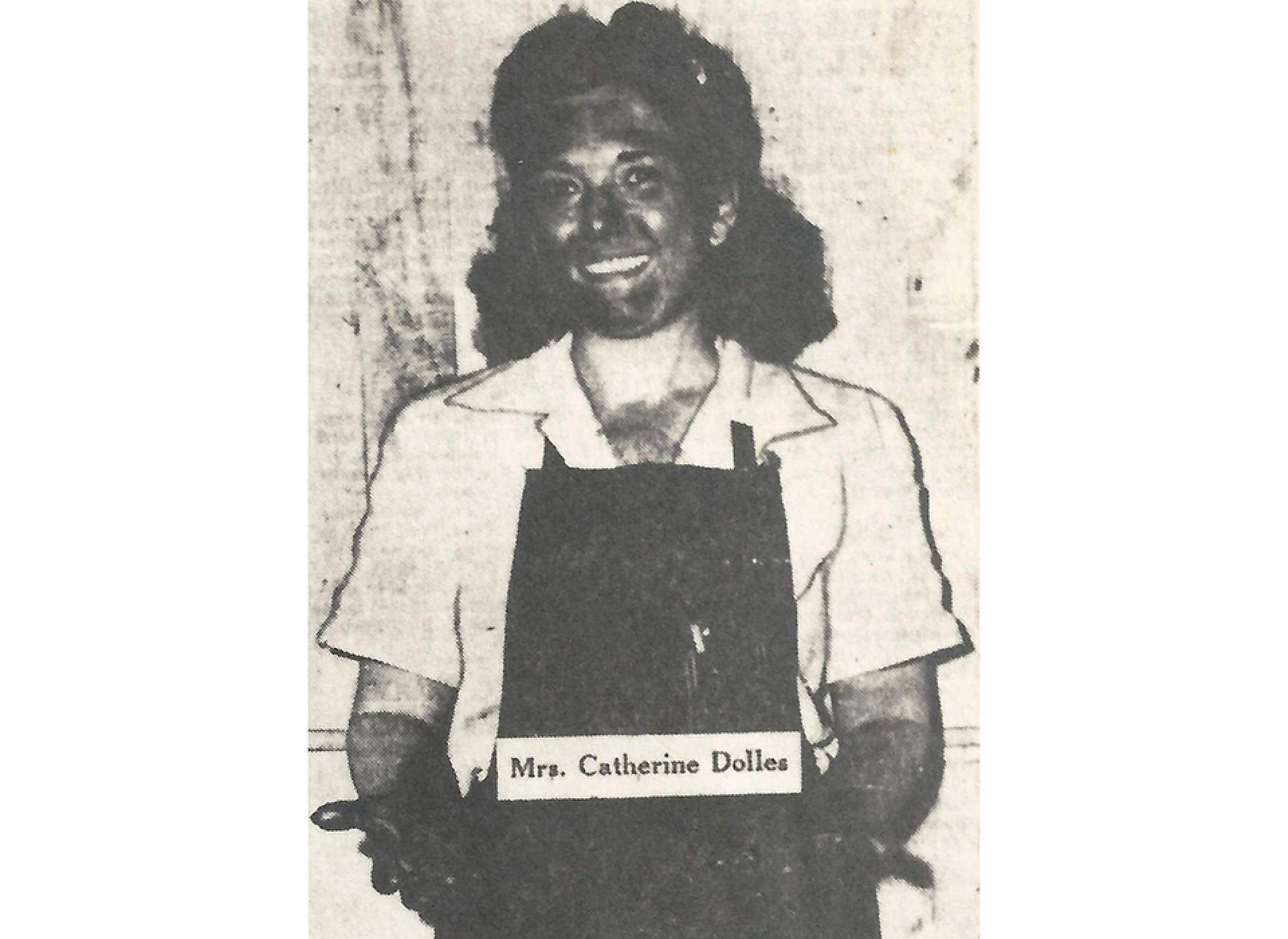
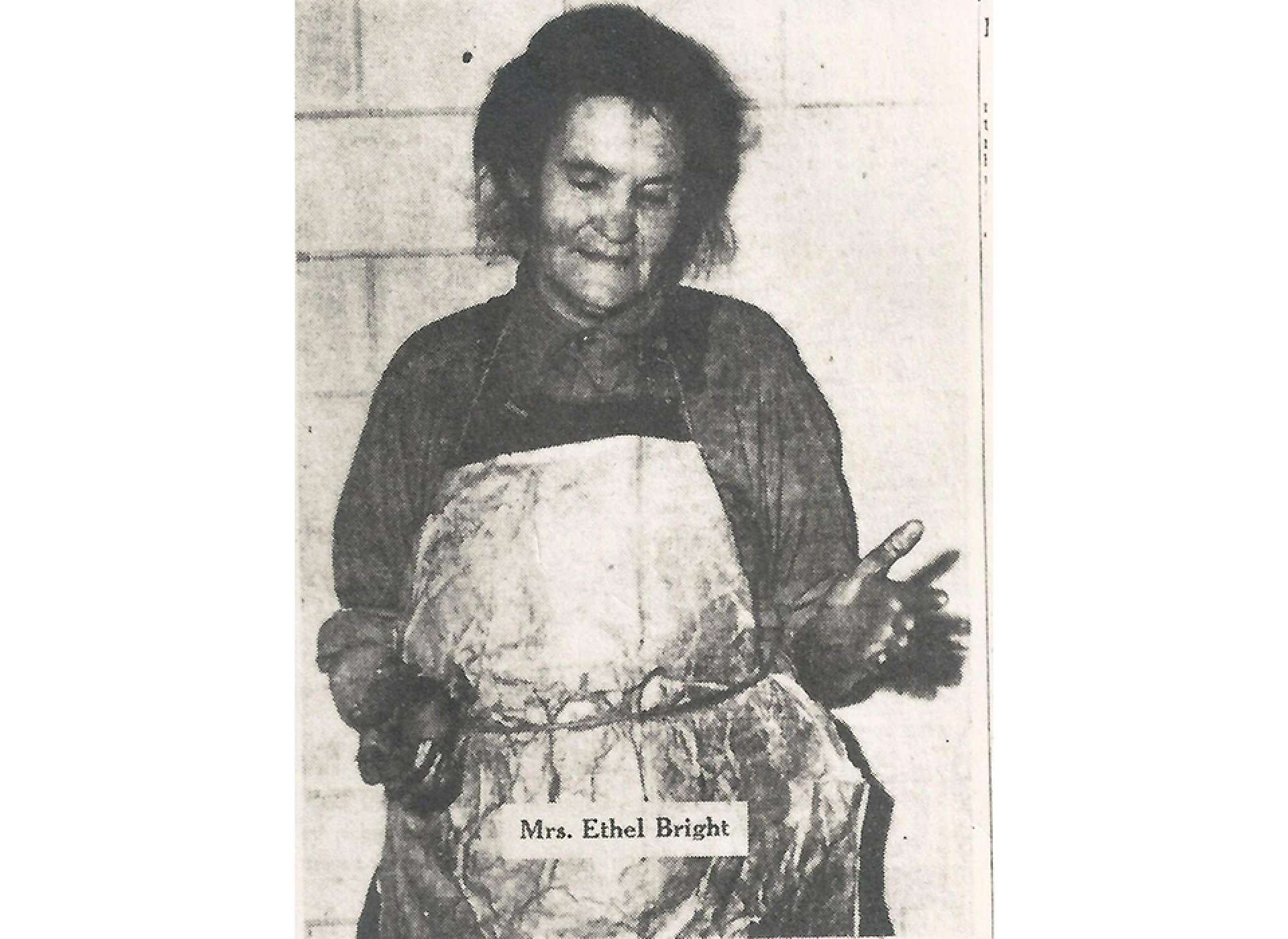
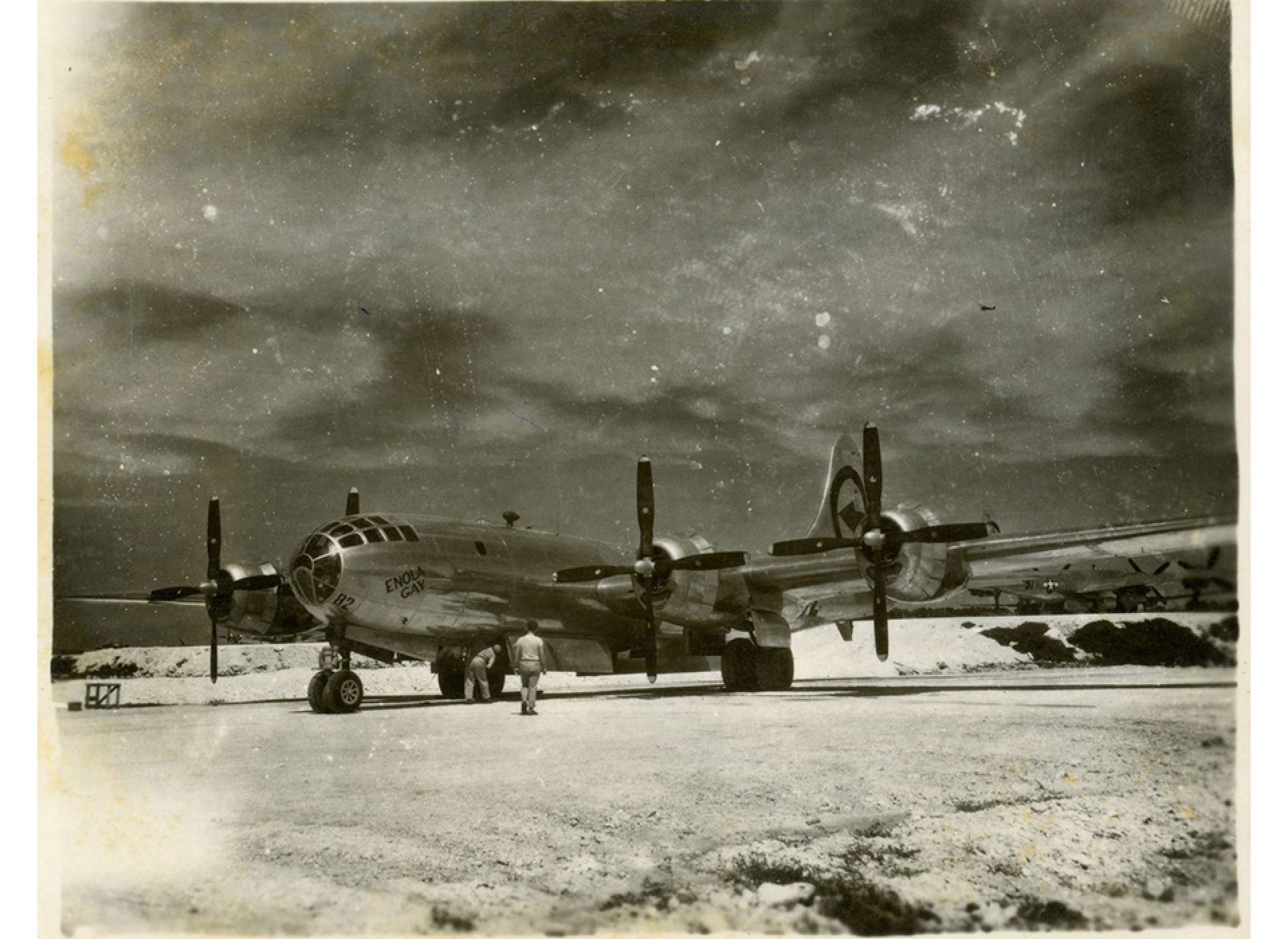
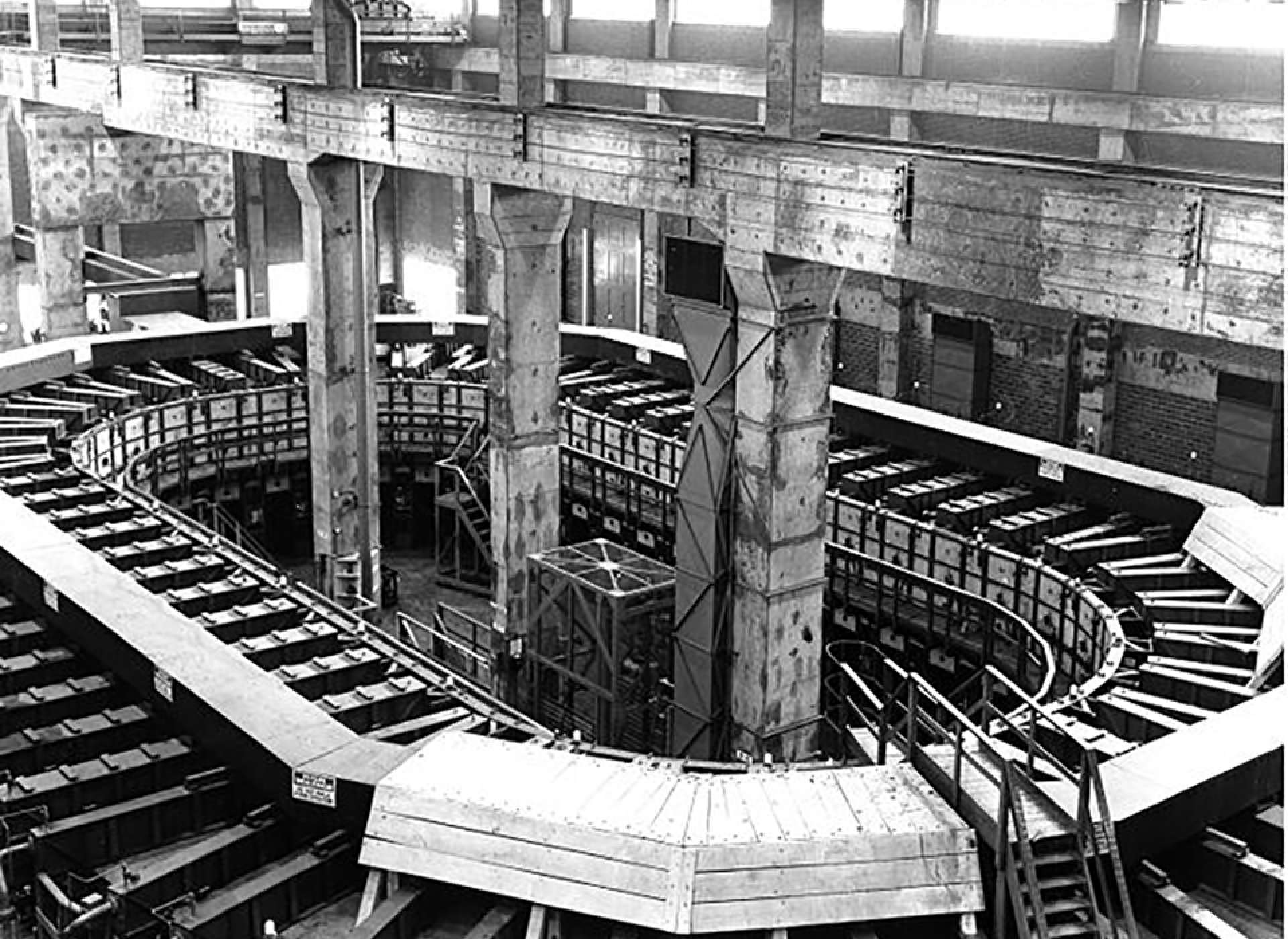
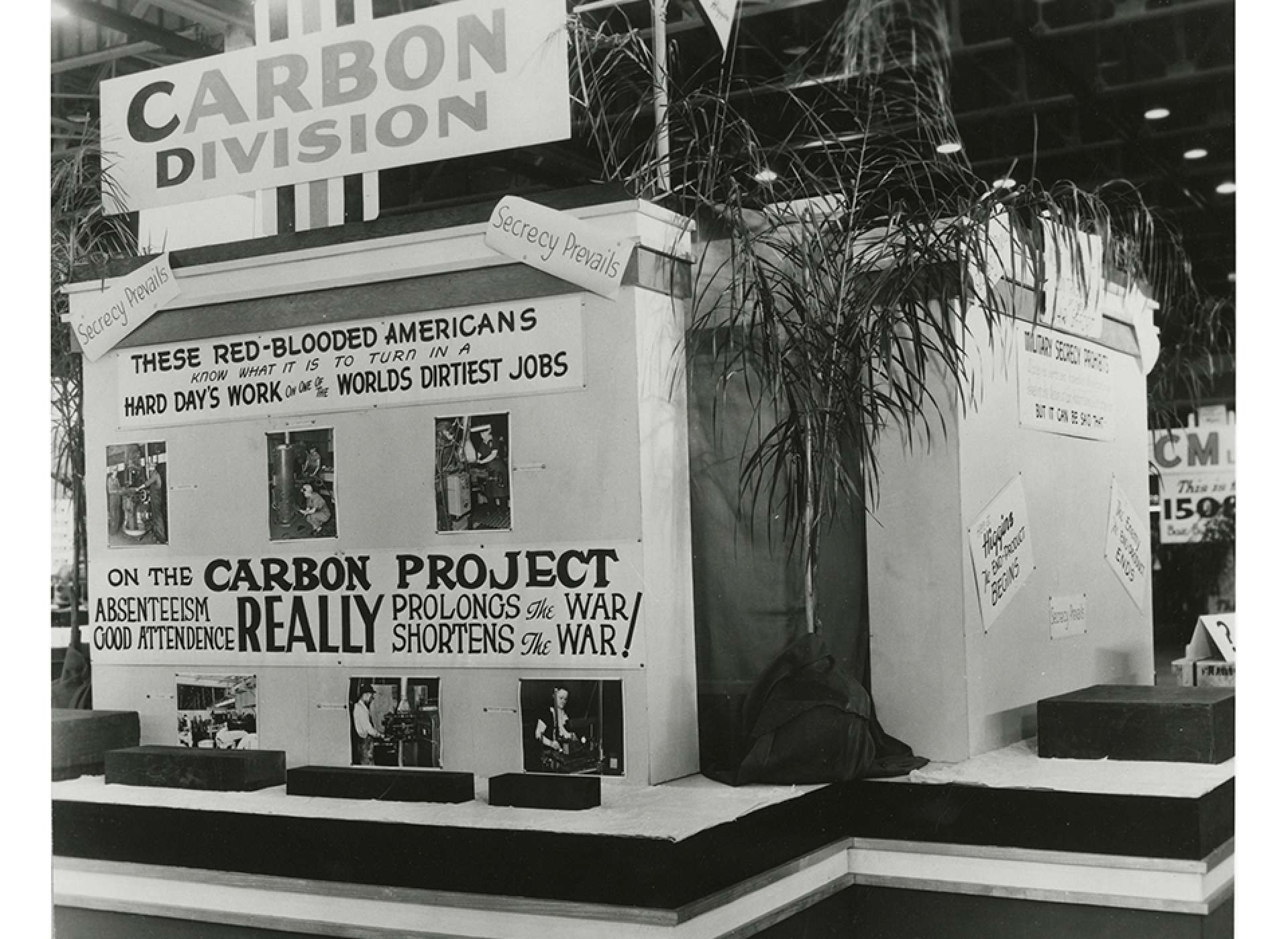






![Max Fuchs, New York City cantor, sings as Rabbi Sydney [sic] Lefkowitz, Richmond, VA, conducts the first Jewish services from Germany.](/sites/default/files/styles/max_650x650/public/2025-10/image1.jpg)


